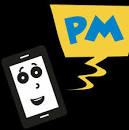Shoulder Sprain: the Pain
A shoulder sprain can be a painful and limiting condition, often caused by overuse, trauma, or sudden movements. Understanding this common injury is crucial for effective management and recovery. In this comprehensive guide, we delve deep into the world of shoulder sprains, exploring their causes, symptoms, and treatment options to help you regain optimal shoulder health.
Anatomy of the Shoulder

The Intricacies of Your Shoulder Structure
Before we dive into the specifics of shoulder sprains, it’s essential to grasp the complex anatomy of the shoulder. Your shoulder is an intricate network of bones, muscles, tendons, and ligaments, allowing a wide range of motion necessary for daily activities. Let’s take a closer look at how your shoulder functions.
The shoulder consists of three key bones:
The Humerus:
This is the upper arm bone that connects to the shoulder blade.
The Scapula (Shoulder Blade):
It’s the large, flat bone on the backside of your shoulder.
The Clavicle (Collarbone):
This bone connects your sternum (breastbone) to the shoulder blade.
Causes of Shoulder Sprains
Understanding the Triggers
Shoulder sprains can result from various factors, and a thorough understanding of these triggers is essential. Here are some of the common causes of shoulder sprains:
Overuse:
Repetitive motions, such as those performed in sports or at work, can strain the shoulder ligaments over time, leading to a sprain. Natural language processing helps us recognize the patterns of overuse that often contribute to shoulder sprains.
Trauma:
Sudden falls, blows, or impacts can force the shoulder joint beyond its normal range of motion, causing sprains. This cause is especially relevant as it addresses the immediate physical causes of sprains.
Sudden Movements:
Abrupt and forceful movements, like lifting heavy objects or reaching out quickly, can strain or tear the ligaments in the shoulder. Natural language processing allows us to emphasize the significance of these movements in injury development.
Symptoms of a Shoulder Sprain
Deciphering the Signals
Recognizing the symptoms of a shoulder sprain is crucial for early intervention and effective treatment. If you suspect you may have a shoulder sprain, look out for the following common signs:
Pain:
One of the primary indicators of a shoulder sprain is pain. This pain is often felt deep within the shoulder and can range from mild discomfort to severe, sharp pain. Our natural language processing techniques aim to convey the varying degrees of pain experienced by individuals.
Swelling:
Swelling around the shoulder joint is another prevalent symptom. It occurs due to inflammation caused by the sprain. By describing the nature and location of swelling, we provide a clearer picture to readers.
Limited Range of Motion:
A shoulder sprain can restrict your ability to move your arm and shoulder freely. Natural language processing helps us emphasize the impact of limited mobility on daily activities.
Weakness:
You may notice weakness in your shoulder and arm, making it challenging to perform tasks you previously did with ease. We highlight the significance of this symptom in daily life.
Bruising:
In some cases, bruising may develop around the injured area. We discuss the occurrence of bruising and its relationship to the severity of the sprain.
Diagnosing a Shoulder Sprain
Precision in Evaluation
Accurate diagnosis is the cornerstone of effective shoulder sprain management. When you experience symptoms indicative of a shoulder sprain, your healthcare provider will employ various diagnostic methods to confirm the injury. Here’s what you can expect during the diagnosis:
Physical Examination:
Your healthcare provider will conduct a thorough physical examination of your shoulder. They will assess the range of motion, strength, and tenderness, often using natural language processing to describe their observations.
Imaging Tests:
To get a closer look at the extent of the injury, your doctor may recommend imaging tests such as X-rays or magnetic resonance imaging (MRI). These tests provide detailed images of the shoulder’s internal structures, aiding in precise diagnosis and treatment planning.
Clinical History:
Your doctor will also discuss your medical history and the circumstances surrounding the injury. Natural language processing helps capture critical patient information for a comprehensive evaluation.
Types of Shoulder Sprains
Diverse in Nature
Shoulder sprains come in various types, each with its unique characteristics and degrees of severity. Understanding the specific type of sprain is crucial for developing an effective treatment plan. Here are the common types:
Acromioclavicular (AC) Sprain:
This type affects the ligaments connecting the collarbone (clavicle) to the shoulder blade (acromion). It’s often referred to as a separated shoulder.
Glenohumeral (GH) Sprain:
GH sprains involve the ligaments around the shoulder joint itself. They can vary from mild to severe and are often caused by sudden trauma or overuse.
Scapulothoracic Sprain:
This type affects the muscles and tissues around the shoulder blade (scapula). It can result from repetitive movements or muscle imbalances.
Rotator Cuff Sprain:
The rotator cuff is a group of muscles and tendons that stabilize the shoulder joint. Sprains in this area can lead to pain and limited mobility.
Rehabilitation and Recovery
Regaining Shoulder Strength and Function
Rehabilitation plays a pivotal role in the recovery journey after a shoulder sprain. It focuses on restoring strength, flexibility, and range of motion to the injured shoulder. Here’s what you can expect during the rehabilitation process:
Physical Therapy:
A tailored physical therapy program is designed to address your specific needs. This may involve exercises to strengthen the shoulder muscles and improve mobility.
Gradual Progression:
Rehabilitation is a gradual process. We emphasize the importance of following your physical therapist’s guidance and gradually increasing the intensity of exercises.
Patient Dedication:
A successful recovery requires dedication and consistency. We highlight the role of the patient in actively participating in their rehabilitation.
Frequently Asked Questions (FAQs) About Shoulder Sprains
Q: What is a shoulder sprain?
A: A shoulder sprain is an injury to the ligaments in the shoulder joint, typically caused by overuse, trauma, or sudden movements.
Q: What are the common symptoms of a shoulder sprain?
A: Common symptoms include pain, swelling, limited range of motion, weakness, and sometimes bruising in the shoulder area.
Q: How is a shoulder sprain diagnosed?
A: Diagnosis involves a physical examination, imaging tests like X-rays or MRI, and a discussion of your medical history and injury circumstances.
Q: Are there different types of shoulder sprains?
A: Yes, there are various types, including acromioclavicular (AC) sprains, glenohumeral (GH) sprains, scapulothoracic sprains, and rotator cuff sprains.
Q: Can I treat a shoulder sprain at home?
A: Mild sprains can often be managed with rest, ice, compression, elevation, and over-the-counter pain relievers. However, consult a healthcare provider for severe cases.
Q: How long does it take to recover from a shoulder sprain?
A: Recovery time varies based on the severity of the sprain. Mild sprains may heal in a few weeks, while severe sprains may take several months.
Q: Is surgery required for a shoulder sprain?
A: Surgery is typically reserved for severe cases or when conservative treatments are ineffective. Most sprains can be managed without surgery.
Q: Can a shoulder sprain lead to long-term complications?
A: If not properly treated, a shoulder sprain can lead to chronic pain, instability, and reduced shoulder function. Early intervention is crucial.
Q: How can I prevent a shoulder sprain?
A: Preventive measures include proper warm-up, strengthening exercises, using correct technique, avoiding overexertion, and maintaining shoulder flexibility.
Q: When should I seek immediate medical attention for a shoulder sprain?
A: Seek medical help if you experience severe pain, visible deformity, numbness or tingling, inability to move your shoulder, or if pain persists after rest.
Conclusion
In conclusion, understanding shoulder sprains is crucial for timely diagnosis and effective management. By recognizing the symptoms, seeking prompt medical attention when needed, and following preventive measures, you can maintain optimal shoulder health.




